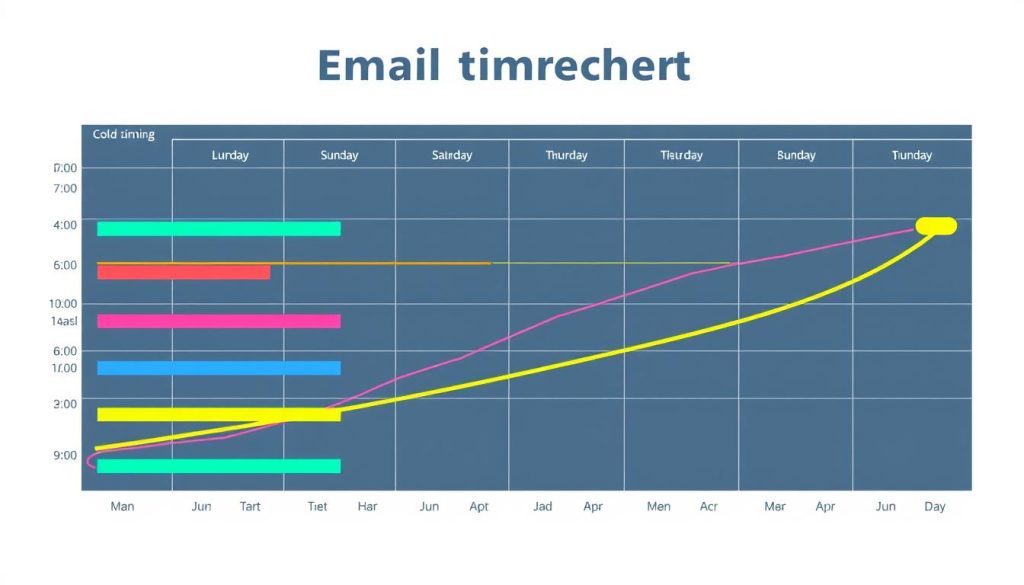Cold emails are a powerful tool for business brokers looking to expand their client base. These targeted messages can open doors to new opportunities and help generate leads. By mastering the art of cold emailing, brokers can reach potential clients they might not otherwise connect with.
In today’s competitive market, business brokers need effective strategies to stand out. Cold emails offer a direct line to decision-makers, allowing brokers to showcase their expertise and value proposition. When done right, these emails can spark interest and lead to fruitful partnerships.
This guide dives into advanced techniques for crafting compelling cold emails. We’ll explore how to create subject lines that grab attention, personalize messages for maximum impact, and time your outreach for the best results. By the end, you’ll have the tools to boost your lead generation efforts and grow your brokerage business.
Key Takeaways
- Cold emails are essential for business brokers’ lead generation
- Personalization increases the effectiveness of cold emails
- Crafting engaging subject lines is crucial for email open rates
- Timing and follow-up strategies play a key role in email success
- Measuring and analyzing email performance helps refine strategies
Understanding Cold Emails and Their Importance
Email outreach remains a powerful tool for business brokers seeking to expand their client base. Cold emails, when crafted effectively, can open doors to new opportunities and drive lead generation efforts. Let’s explore what cold emails are and why they’re valuable for business brokers.
What is a Cold Email?
A cold email is an unsolicited message sent to a potential client or business contact without prior interaction. Unlike spam, cold emails are personalized and targeted, aiming to start a conversation or introduce a service. For business brokers, cold emails serve as a digital handshake, initiating contact with potential sellers or buyers.
Benefits of Cold Emails for Business Brokers
Cold emails offer several advantages for business brokers:
- Cost-effective lead generation
- Scalable outreach to a large audience
- Ability to target specific industries or company sizes
- Opportunity to showcase expertise and value proposition
- Trackable results for performance analysis
By leveraging cold emails, business brokers can efficiently connect with decision-makers, nurture relationships, and ultimately secure more deals. This method of outreach allows brokers to cast a wider net while maintaining a personal touch, essential for building trust in the business brokerage industry.
“Cold emails have transformed our lead generation process, helping us connect with clients we might never have reached otherwise.” – Experienced Business Broker
Understanding the nuances of cold emailing is crucial for business brokers looking to enhance their digital marketing strategy and grow their client base effectively.
Crafting the Perfect Subject Line
The subject line is your first impression in cold emails. For business brokers, it’s the key to unlocking potential client relationships. A well-crafted subject line can dramatically improve open rates and set the stage for successful interactions.
Key Elements of an Engaging Subject Line
Effective email subject lines for cold emails share common traits. They’re concise, personalized, and spark curiosity. Business brokers should focus on creating subject lines that highlight value or address specific pain points. Use action words, numbers, or questions to grab attention.
- Keep it under 50 characters
- Include the recipient’s name or company
- Create a sense of urgency
- Avoid spam trigger words
Examples of Effective Subject Lines
Let’s look at some subject lines that work well for business brokers:
| Subject Line | Why It Works |
|---|---|
| [Name], interested in selling your business? | Personal and direct question |
| 5 reasons to consider a business valuation now | Uses a number and creates urgency |
| Your industry is hot – buyers are looking | Implies opportunity and timeliness |
| Quick call this week about [Company Name]? | Suggests a low-commitment action |
Remember, the best subject lines for cold emails are those that resonate with your specific audience. Test different approaches and analyze your results to refine your strategy over time.
Personalization Techniques for Cold Emails
Email personalization plays a crucial role in cold email campaigns. Business brokers who master this art can significantly boost their lead generation efforts. Let’s explore why personalization matters and the tools that can help streamline this process.
Why Personalization Matters
Personalized cold emails stand out in crowded inboxes. They show recipients that you’ve done your homework and value their time. This approach can lead to higher open rates, better engagement, and improved conversion rates.
Studies show that personalized emails deliver six times higher transaction rates compared to generic messages. By tailoring your content to each recipient, you create a connection that can spark interest in your services.
Tools for Personalization
Several tools can help business brokers personalize their cold emails at scale. These include:
- Customer Relationship Management (CRM) systems
- Email automation platforms
- Data enrichment tools
- AI-powered writing assistants
These tools can help you gather relevant information about your prospects and seamlessly integrate it into your emails. This level of personalization can significantly enhance your lead generation efforts.
| Personalization Tool | Key Feature | Benefit |
|---|---|---|
| Salesforce | Contact management | Organize prospect data |
| Mailchimp | Dynamic content | Customize email content |
| Clearbit | Data enrichment | Gather detailed prospect info |
| Grammarly | Writing assistance | Improve email quality |
By leveraging these personalization techniques and tools, business brokers can craft cold emails that resonate with their target audience and drive better results.
Structuring Your Cold Email
Crafting effective cold emails is crucial for business brokers looking to expand their network and generate leads. The structure of your email plays a vital role in capturing attention and encouraging engagement. Let’s explore the key elements of a well-structured cold email.
The Ideal Email Length
When it comes to cold emails, brevity is key. Aim for 100-200 words to keep your message concise and impactful. This length allows you to convey your value proposition without overwhelming the recipient. Remember, busy professionals appreciate emails that respect their time.
Crafting a Compelling Opening
Your opening sets the tone for the entire email. Start with a personalized greeting that shows you’ve done your research. Follow with a hook that grabs attention and relates to the recipient’s interests or pain points. For example:
Hi [Name], I noticed your recent acquisition of [Company]. Congratulations on the successful deal!
This opening demonstrates your knowledge of the recipient’s business activities and establishes relevance. From there, quickly transition into your value proposition, clearly stating how your services as a business broker can benefit them. Remember to keep your email structure clean and easy to scan, using short paragraphs and bullet points where appropriate.
Writing Engaging Email Content
Crafting compelling email content is crucial for successful cold emails and lead generation. Business brokers need to master the art of clear, concise messaging to capture attention and drive action.
Tips for Clear and Concise Messaging
To create impactful email content, focus on these key points:
- Keep your message brief and to the point
- Use simple language and avoid industry jargon
- Highlight the value you offer to potential clients
- Personalize your message based on recipient research
- Use bullet points to break up text and improve readability
Remember, your goal is to spark interest and start a conversation. Avoid overwhelming recipients with too much information in your initial outreach.
Incorporating a Call to Action
A strong call to action (CTA) is essential for driving engagement in cold emails. Your CTA should be clear, specific, and easy to follow. Consider these effective CTAs for business brokers:
| CTA Type | Example | Purpose |
|---|---|---|
| Schedule a Call | “Book a 15-minute consultation” | Initiate direct contact |
| Request Information | “Download our free business valuation guide” | Provide value and generate leads |
| Soft Engagement | “Reply with your biggest business challenge” | Start a conversation |
By combining clear messaging with a compelling CTA, your cold emails will be more likely to generate leads and spark meaningful business conversations.
Timing Your Cold Emails
Mastering email timing is crucial for business brokers using cold emails. The right moment can make the difference between a successful connection and a missed opportunity. Let’s explore how to optimize your email schedule for maximum impact.
Best Days and Times to Send Emails
Research shows that Tuesday and Thursday mornings are prime times for cold emails. Business professionals often check their inboxes early, making 10 AM to 11 AM an ideal window. Avoid Mondays when inboxes are typically flooded and Fridays when people are winding down for the weekend.

Analyzing Response Rates
Track your email performance to refine your timing strategy. Use email marketing tools to monitor open rates, click-through rates, and response times. Pay attention to which days and times yield the best results for your specific audience of potential business buyers or sellers.
Consider these factors when analyzing response rates:
- Industry norms and working hours
- Geographic time zones of your recipients
- Seasonal fluctuations in business activity
By fine-tuning your email timing, you can significantly boost the effectiveness of your cold email campaigns. Remember, consistency is key. Stick to a schedule that works for your target audience, and be prepared to adjust based on the data you collect.
Following Up: When and How
Effective email follow-ups are crucial for cold email success and lead generation. A well-crafted follow-up can significantly boost your chances of getting a response from potential clients. Let’s explore how to create impactful follow-up messages and determine the best timing for your outreach.
Crafting Follow-Up Emails
When writing follow-up emails, keep them brief and focused. Remind the recipient of your initial contact and add new value to each message. Use a friendly tone and express genuine interest in their business. Here’s a simple structure for effective follow-ups:
- Reference your previous email
- Provide additional value or information
- Restate your call-to-action
- End with a polite closing
Frequency and Timing of Follow-Ups
Finding the right balance in follow-up frequency is key to avoiding spam complaints while maximizing your chances of a response. A good rule of thumb is to send 2-3 follow-ups over a 2-3 week period. Here’s a suggested timeline:
| Follow-up | Timing | Focus |
|---|---|---|
| 1st | 3-4 days after initial email | Gentle reminder |
| 2nd | 7-10 days after 1st follow-up | New value proposition |
| 3rd | 7-10 days after 2nd follow-up | Final attempt with strong CTA |
Remember, the goal of cold emails and follow-ups is to start a conversation, not to make an immediate sale. By following these guidelines, you can improve your lead generation efforts and build meaningful business relationships.
Measuring Cold Email Success
Tracking the right email metrics is crucial for business brokers using cold emails. By monitoring key performance indicators, you can refine your strategy and boost your success rate.
Key Metrics to Track
To gauge the effectiveness of your cold emails, focus on these essential metrics:
- Open rate: Percentage of recipients who opened your email
- Click-through rate: Proportion of readers who clicked on links
- Response rate: Number of replies received
- Conversion rate: Percentage of leads that turned into clients
- Bounce rate: Emails that failed to reach the recipient’s inbox

Analyzing Responses and Adjusting Strategy
Examine the data from your cold email campaigns to identify patterns and trends. Look for commonalities among successful emails and pinpoint areas for improvement. Use A/B testing to compare different subject lines, content, and sending times.
Adjust your approach based on these insights:
- Refine your subject lines to boost open rates
- Improve email content to increase engagement
- Optimize sending schedules for better response rates
- Personalize messages to resonate with your target audience
By continually analyzing and refining your cold email strategy, you’ll enhance your outreach efforts and connect with more potential clients as a business broker.
Common Mistakes to Avoid
Cold emails can be powerful tools for lead generation, but they’re easy to get wrong. Learning from email mistakes can boost your success rate. Let’s dive into common pitfalls and ways to fix them.
Pitfalls in Cold Emailing
Many business brokers stumble when crafting cold emails. Here are key errors to watch out for:
- Generic greetings that fail to personalize
- Lengthy emails that lose reader interest
- Focusing on yourself instead of the recipient’s needs
- Unclear or missing call-to-action
- Poor timing or frequency of sends
Strategies for Effective Revisions
Improving your cold emails is crucial for successful lead generation. Try these tactics:
- Research your recipient thoroughly
- Keep emails concise and value-focused
- Craft compelling subject lines
- Use a clear, single call-to-action
- Test different send times
Remember, effective cold emails require constant refinement. Track your results and adjust your approach based on what works best for your audience.
| Common Mistake | Revision Strategy |
|---|---|
| Generic content | Personalize based on recipient research |
| Too long | Aim for 3-5 short paragraphs |
| Weak subject line | Use curiosity or value proposition |
| No clear CTA | Include one specific, actionable request |
| Poor timing | Test different days and times |
Case Studies: Successful Cold Email Campaigns
Let’s dive into real-world email case studies that showcase how business brokers have mastered the art of cold emails. These examples highlight effective strategies and provide valuable insights for professionals in the industry.
Examples of Best Practices
One standout case involved a boutique brokerage firm that increased its client base by 40% through targeted cold emails. They used LinkedIn Sales Navigator to identify potential and craft personalized messages. This approach led to a 25% response rate, significantly higher than industry averages.
Another success story comes from a broker who specialized in tech startups. By using data-driven subject lines and concise, value-packed content, they achieved an impressive 35% open rate. Their secret? Tailoring each email to address specific pain points of founders looking to exit.
Lessons Learned from Real Campaigns
These case studies reveal crucial lessons for business brokers. First, personalization is key – generic emails simply don’t cut it. Second, timing matters; reaching out during key business milestones often yields better results. Lastly, persistence pays off, but there’s a fine line between follow-up and spam. Successful brokers find that sweet spot, nurturing leads without overwhelming them.
FAQ
What is the ideal length for a cold email?
The ideal length for a cold email is typically between 50 to 125 words. This length is concise enough to maintain the reader’s attention while providing sufficient information to pique their interest. Remember, the goal is to be brief yet impactful.
How can I personalize my cold emails effectively?
To personalize your cold emails effectively, research your recipient and their company, use their name in the greeting, reference specific details about their business or recent achievements, and tailor your value proposition to their unique needs. Utilizing personalization tools can help scale this process for larger campaigns.
What are some key metrics to track for cold email success?
Key metrics to track for cold email success include open rates, click-through rates, response rates, conversion rates, and unsubscribe rates. These metrics provide insights into the effectiveness of your subject lines, email content, and overall campaign performance.
How often should I follow up after sending a cold email?
A good rule of thumb is to follow up 2-3 times after your initial cold email, with each follow-up spaced about 3-5 business days apart. However, be mindful not to appear pushy or spam-like. Adjust your follow-up frequency based on your industry norms and recipient engagement.
What are some common mistakes to avoid in cold emailing?
Common mistakes to avoid in cold emailing include using generic, non-personalized content, writing overly long emails, neglecting to proofread, failing to include a clear call-to-action, and not following up. Additionally, avoid using deceptive subject lines or making unrealistic promises in your email content.
What’s the best time to send cold emails?
Generally, the best times to send cold emails are Tuesday through Thursday, between 10 AM and 2 PM in the recipient’s time zone. However, optimal timing can vary depending on your specific industry and target audience. It’s crucial to test different send times and analyze your results to determine the most effective timing for your campaigns.
How can I improve my cold email open rates?
To improve your cold email open rates, focus on crafting compelling and personalized subject lines, ensure your sender name is recognizable and trustworthy, segment your email list for targeted messaging, and regularly clean your email list to maintain high deliverability. A/B testing different subject lines can also help you identify what resonates best with your audience.
What tools can help with cold email outreach?
Several tools can enhance your cold email outreach efforts, including CRM systems like Salesforce or HubSpot, email automation platforms like Mailchimp or SendGrid, prospecting tools like LinkedIn Sales Navigator or Hunter.io, and email tracking software like Yesware or Boomerang. These tools can help with list building, personalization, scheduling, and performance tracking.


